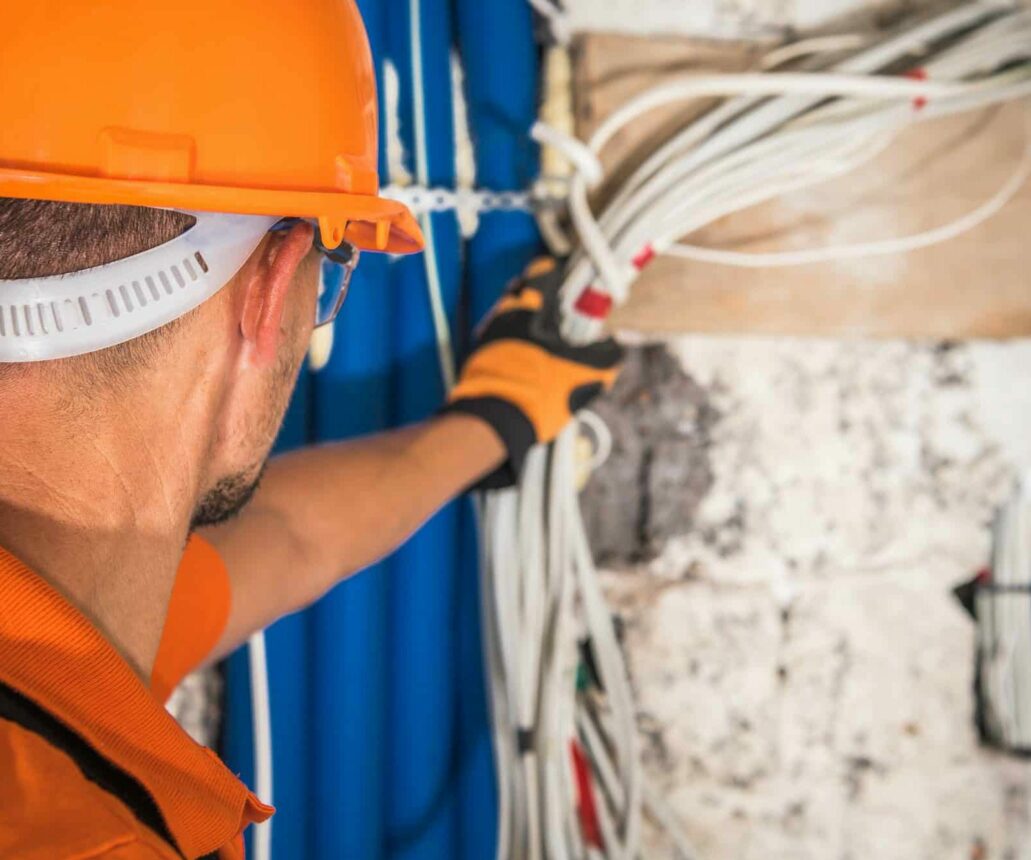Work With An Experienced Commercial Wiring Contractor
Our expertise, high-performance standards, and strict compliance with safety regulations make us the top wiring contractors for your commercial facility.
Reliable, high-performing commercial wiring is an absolute must for any business, office building, or commercial facility. Professionally installed wiring will keep your workers and visitors safe, prevent business disruptions, and help you avoid costly downtime and liability lawsuits.
Suncoast Power is available for commercial wiring projects of any size, from small office parks to high-rise office buildings, warehouses, and airports. speak to an expert for your commercial wiring project today.
"*" indicates required fields
Our expertise, high-performance standards, and strict compliance with safety regulations make us the top wiring contractors for your commercial facility.

If you are looking for an electrical contractor to install or upgrade your commercial wiring, schedule a consultation today! Our team has provided commercial wiring installation, maintenance, and upgrade services in South Florida for over 30 years. Some of our primary wiring services include
No matter how large or small the job, we ensure that all of our commercial wiring work is in compliance with local building codes as well as national safety standards. We are licensed and insured to provide commercial wiring and other electrical services throughout Florida and parts of the Southeast United States.

We adhere to OSHA standards for commercial wiring. Our electricians comply with standards 1910.305 and 1926.405 to prevent hazards for our team and clients. Our highly experienced, fully trained wiring professionals follow strict safety protocols and use all required personal protective equipment.

The National Fire Protection Association (NFPA)’s Standard 70, National Electric Code, is the national benchmark for all safe electrical designs, installations, and inspections. This code is set in place to help protect people and buildings are safe from electrical hazards.
We follow all requirements for electrical protective equipment, electrical machinery, insulation, and personal protective equipment. Our methods depend on reliable safety regulations that protect workers, visitors, and customers from dangers like fire, electrocution, explosions, and electric shock.
Commercial buildings have different wiring needs and requirements than private residences. A commercial facility typically requires much higher load capacities, which involves higher risk and may call for other installation methods. The three wiring types that are most optimal for commercial electrical wiring are raceways & conductors, busways, and cable assemblies.

The raceway & conductor installation method is commercial facilities’ most common electrical wiring type. This installation type involves an enclosed metallic or nonmetallic conduit that holds electrical wires. Commercial wiring typically consists of copper or aluminum conductors, PVC insulation, and a protective layer like a thermoplastic high heat-resistant nylon jacket (THHN) or a thermoplastic heat and water-resistant nylon jacket (THWN).
Popular types of raceways and conductors in commercial buildings include:
The raceways & conductors wiring offers several advantages, including:
On the other hand, this method also has its cons, such as:
Busways are another type of commercial wiring. Also known as a bus duct, busways are a metal-enclosed raceway consisting of pre-mounted bus bars. There are two types of commercial busways: plug-in style and feeder style, and they can be configured with insulated or bare conductors.
Busways offer several advantages over their wiring counterparts, including:
Busways also come with some drawbacks, such as:
Manufactured cable assemblies typically consist of multiple neutral and insulated-phase conductors and a grounding conductor wrapped in a metal or non-metal sheath. Standard assemblies are typically equipped with THHN/THWN conductors. A manufactured cable assembly can be a standard product or custom ordered with specific conductor configurations.
The most common commercial cable assemblies include:
Cable assemblies offer benefits including:
There are disadvantages of cable assemblies, just like with any cable option, including: